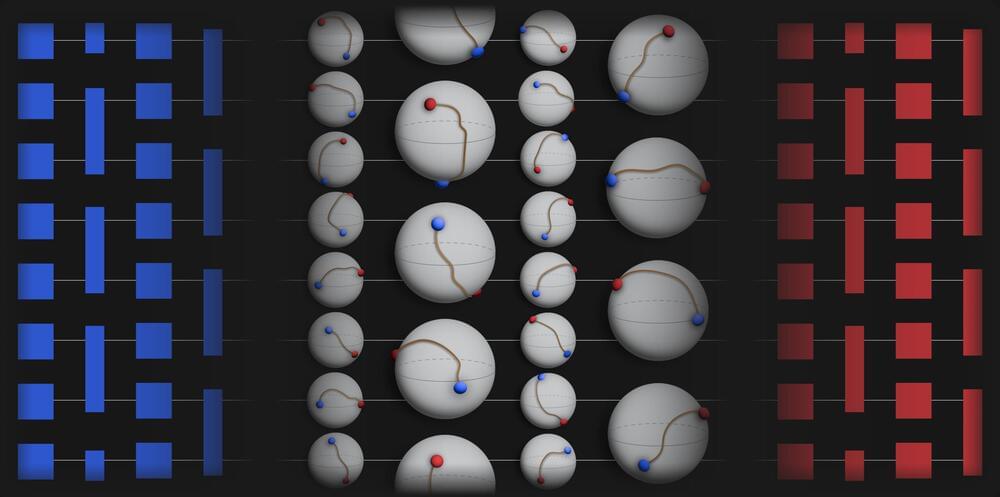Belinda Howell, Non-Executive Director at Digital Catapult, walks Reuters Plus through the potential that AI has to reduce carbon emissions and mitigate climate change.



By improving hospital care pathways, researchers from The University of Texas MD Anderson Cancer Center successfully reduced inpatient opioid use by 50% after pancreatic cancer surgery and cut the median opioid prescription volumes at discharge to zero. This approach, described in a study published in JAMA Surgery, could help reduce the risk of long-term opioid dependence in patients.
In this cohort study, which involved 832 patients undergoing pancreatic resection surgery, the researchers investigated how making incremental modifications to post-surgery procedures affected the amounts of opioids used by inpatients and at the point of discharge.
In less than four years, the total inpatient oral morphine equivalents (OME) decreased from a median of 290 mg to 129 mg, while OME at discharge decreased from a median of 150 mg to 0 mg. Over 75% of patients were discharged with ≤ 50 mg OME, which is fewer than 10 pills.

In new research published in BMC Medicine, the authors recruited a large cohort of participants in order to assess how plant-based foods affect aging trajectories [1].
Previous research has shown that consumption of plant-based foods is associated with healthy aging [2,3]. It can also help to decrease the risk of mortality [4], prevent the development of chronic diseases [5,6], and improve neurological health, such as by lowering the risk of dementia [7] and cognitive impairment [8].
This new study aimed to determine the influence of a plant-based diet on the aging trajectory of the middle-aged Asian population. Researchers recruited over 10,000 people 50 years and older in Taiwan. Participants provided health data four times during the eight years after enrollment, underwent physical examinations, and filled out relevant questionnaires.

Physicists at CERN’s Large Hadron Collider (LHC) have made the first ever direct observation of neutrinos in a particle accelerator.
Neutrinos are tiny, near massless and chargeless particles. They are among the elementary particles that make up the Standard Model of particle physics. Of all the particles in the Standard Model, neutrinos are among the least understood.
Even seeing a neutrino is extremely difficult, despite the fact they are among the most numerous particles in the universe. An estimated 100 trillion (100 million million) neutrinos pass through your body every second!
We may have become the most complex living creature in part by accident and replication of error.

Quantum computers, technologies that perform computations leveraging quantum mechanical phenomena, could eventually outperform classical computers on many complex computational and optimization problems. While some quantum computers have attained remarkable results on some tasks, their advantage over classical computers is yet to be conclusively and consistently demonstrated.
Ramis Movassagh, a researcher at Google Quantum AI, who was formerly at IBM Quantum, recently carried out a theoretical study aimed at mathematically demonstrating the notable advantages of quantum computers. His paper, published in Nature Physics, mathematically shows that simulating random quantum circuits and estimating their outputs is so-called #P-hard for classical computers (i.e., meaning that is highly difficult).
“A key question in the field of quantum computation is: Are quantum computers exponentially more powerful than classical ones?” Ramis Movassagh, who carried out the study, told Phys.org. “Quantum supremacy conjecture (which we renamed to Quantum Primacy conjecture) says yes. However, mathematically it’s been a major open problem to establish rigorously.”
Diagonal Arguments are a powerful tool in maths, and appear in several different fundamental results, like Cantor’s original Diagonal argument proof (there exist uncountable sets, or “some infinities are bigger than other infinities”), Turing’s Halting Problem, Gödel’s incompleteness theorems, Russell’s Paradox, the Liar Paradox, and even the Y Combinator.
In this video, I try and motivate what a general diagonal argument looks like, from first principles. It should be accessible to anyone who’s comfortable with functions and sets.
The main result that I’m secretly building up towards is Lawvere’s theorem in Category Theory.
[https://link.springer.com/chapter/10.1007/BFb0080769]
with inspiration from this motivating paper by Yanofsky.
[https://www.jstor.org/stable/3109884].
This video will be followed by a more detailed video on just Gödel’s incompleteness theorems, building on the idea from this video.
====Timestamps====
00:00 Introduction.
00:59 A first look at uncountability.
05:04 Why generalise?
06:53 Mathematical patterns.
07:40 Working with functions and sets.
11:40 Second version of Cantor’s Proof.
13:40 Powersets and Cantor’s theorem in its generality.
15:38 Proof template of Diagonal Argument.
16:40 The world of Computers.
21:05 Gödel numbering.
23:05 An amazing program (setup of the Halting Problem)
25:05 Solution to the Halting Problem.
29:49 Comparing two diagonal arguments.
31:13 Lawvere’s theorem.
32:49 Diagonal function as a way for encoding self-reference.
35:11 Summary of video.
35:44 Bonus treat — Russell’s Paradox.
CORRECTIONS
Experts at Berkeley Lab finished winding more than 2000 kilometers of superconducting wire into cables for new magnets that will help upgrade the Large Hadron Collider and the search for new physics.

AAV development for cell and gene therapy in 2023 is being impacted by manufacturing and regulation challenges, however advancing technologies offer opportunity, according to leaders in the field.
As proven by recent regulatory approvals sweeping the cell and gene therapy industry, particularly within Europe and the US, these pioneering treatments have demonstrated great capacity in helping to resolve hard-to-treat diseases.
